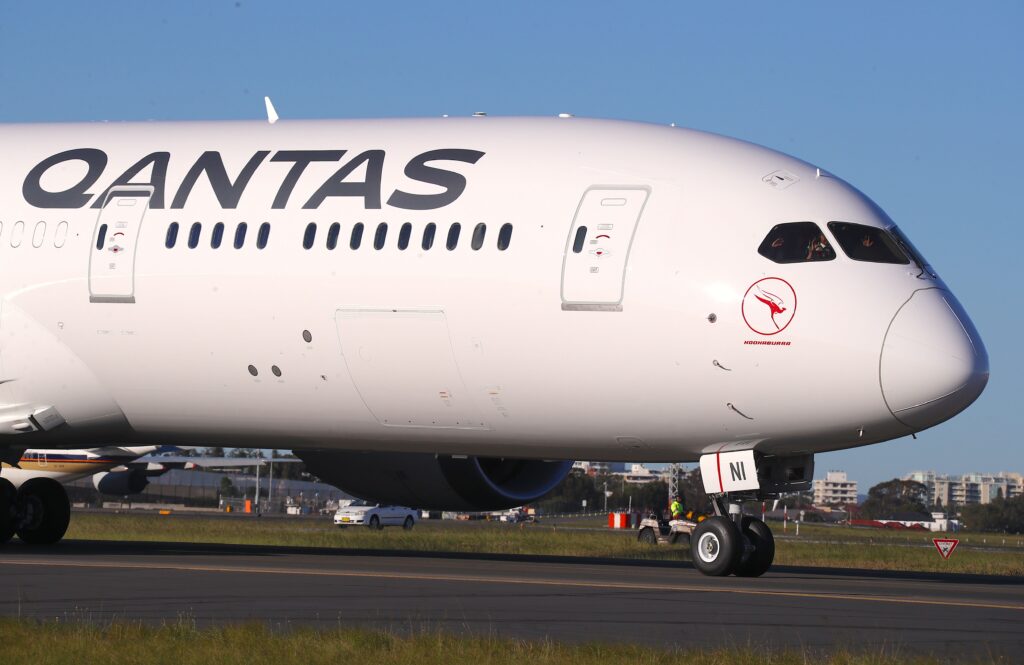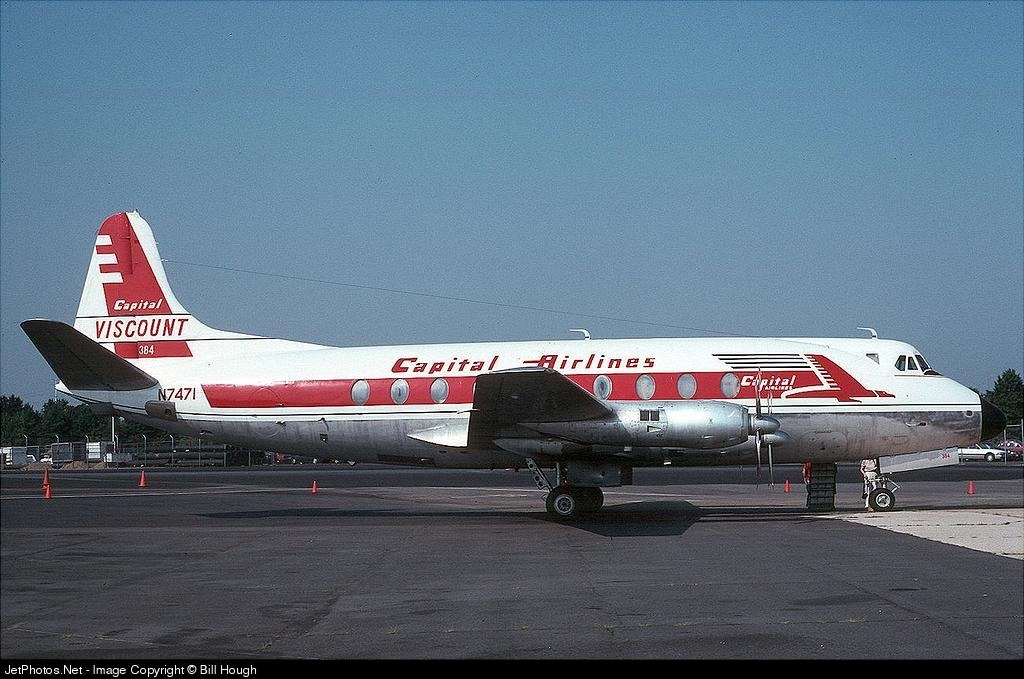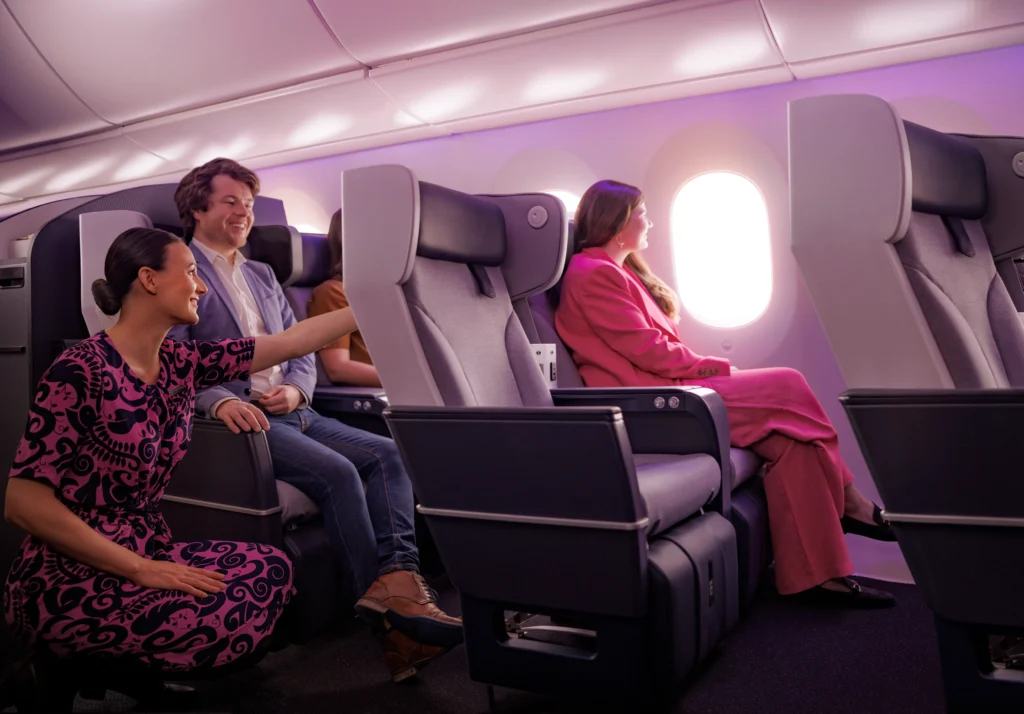
For travelers who enjoy a view while flying with Boeing from airports such as London Heathrow (LHR) or New York John F. Kennedy (JFK), the size of airplane windows can make all the difference.
Larger windows not only enhance the flying experience but also give passengers a brighter, more spacious cabin atmosphere.
When flying with Airbus from major hubs like Paris Charles de Gaulle (CDG) or Frankfurt (FRA), passengers may notice different window sizes depending on the aircraft type.
From widebodies to narrowbodies, window dimensions vary greatly, shaping the comfort and visibility passengers enjoy at 30,000 feet.
 Photo: Qantas
Photo: QantasLargest Passenger Aircraft Windows
Among active commercial aircraft, the Boeing 787 Dreamliner stands out for its widebody window design. Measuring 27.2 cm x 46.7 cm (10.7 inches x 18.4 inches), these windows are the largest available on any jet in service today.
Boeing highlights that every passenger on the 787 Dreamliner has a clear view of the horizon, emphasizing that its windows are designed to enhance the travel experience.
In addition to size, the Dreamliner’s windows are equipped with an electrochromic dimming feature. Instead of traditional plastic shades, passengers can adjust brightness electronically at the touch of a button.
This modern technology maintains cabin ambiance while allowing outside visibility, a feature that makes the 787 unique in passenger comfort.
Reported by Simple Flying, this innovation has been well received by both airlines and travelers, helping distinguish the Dreamliner in today’s competitive market.
 Photo: airBaltic
Photo: airBalticAirbus and Narrowbody Advantage
Airbus offers competitive window sizes across its aircraft range, though its widebody A350 features smaller panes than the 787. The A350’s windows measure 24.1 cm x 34.3 cm (9.5 inches x 13.5 inches), slightly smaller but still providing ample natural light in the cabin.
However, Airbus leads the industry in narrowbody window design with the A220 family. Originally developed by Bombardier as the CSeries, the aircraft was acquired and rebranded by Airbus in the late 2010s.
Its windows measure 28 cm x 40.6 cm (11 inches x 16 inches), making them the largest in any single-aisle commercial jet.
Operators such as airBaltic (BT) have praised these “extra large windows” for providing passengers with brighter cabins and a sense of openness similar to widebody aircraft.
 Photo-https://commons.wikimedia.org/wiki/File:Mid-Atlantic_Air_Museum%27s_Capital_Airlines_Vickers_Viscount.jpg
Photo-https://commons.wikimedia.org/wiki/File:Mid-Atlantic_Air_Museum%27s_Capital_Airlines_Vickers_Viscount.jpgHistorical Aircraft With Oversized Windows
While modern jets offer impressive window sizes, aviation history includes examples of aircraft with even larger viewing opportunities.
The Vickers Viscount and Vickers Vanguard, both turboprop airliners popular in the mid-20th century, featured enormous elliptical windows. Measuring 48 cm x 66 cm (19 inches x 26 inches), these were more than twice the surface area of the 787’s windows.
Airlines like British European Airways (now defunct) operated them, flying to airports like London Heathrow (LHR), and historical records celebrate their expansive windows.
These distinctive designs offered passengers unmatched views of the sky and ground below, but engineers eventually phased out the oversized windows due to concerns about structural efficiency, pressurization challenges, and evolving aircraft design requirements.
The Douglas DC-8, used by carriers like Japan Airlines (JL), featured windows of 43.5 cm x 52.39 cm (17.13 inches x 20.63 inches), the largest among jet airliners of its time.
Despite this, they remain an iconic part of aviation history and a reminder of how passenger experience influenced design choices in earlier decades.
 Premium Economy; Photo- Air New Zealand
Premium Economy; Photo- Air New ZealandWhy Window Size Matters?
The progression of airplane window design reflects a balance between engineering practicality and passenger comfort.
Modern manufacturing techniques have allowed airlines to introduce larger windows without compromising structural strength, as seen on the 787 and A220.
Cabin design priorities have shifted toward creating a spacious environment, and larger windows are central to achieving this goal.
In addition to aesthetics and comfort, larger windows influence passenger well-being. Exposure to natural light reduces fatigue and helps regulate circadian rhythms on long-haul flights.
For this reason, airlines increasingly promote cabin brightness as a feature of modern fleets.
Additionally, larger windows enable flight attendants to monitor external conditions during emergencies, as seen on flights to busy hubs like Chicago O’Hare (ORD).
 Photo: Boeing
Photo: BoeingFuture Trends in Airplane Window Design
The trend toward larger windows is evident in upcoming aircraft like the Boeing 777X, which will further enhance the passenger experience.
Airlines like Lufthansa (LH) plan to deploy the 777X on routes to major hubs like Frankfurt (FRA), capitalizing on its spacious cabin and expansive windows.
Advances in materials, such as carbon fiber, enable manufacturers to incorporate larger windows while maintaining safety and efficiency.
This shift reflects passenger demand for better views and a more open cabin environment, a priority for airlines operating from global hubs like Tokyo Narita (NRT).
Stay tuned with us. Further, follow us on social media for the latest updates.
Join us on Telegram Group for the Latest Aviation Updates. Subsequently, follow us on Google News
Boeing 777X Has 29% Larger Windows than This Aircraft, Here’s Why
The post This Aircraft Has Largest Airplane Windows in the World appeared first on Aviation A2Z.
